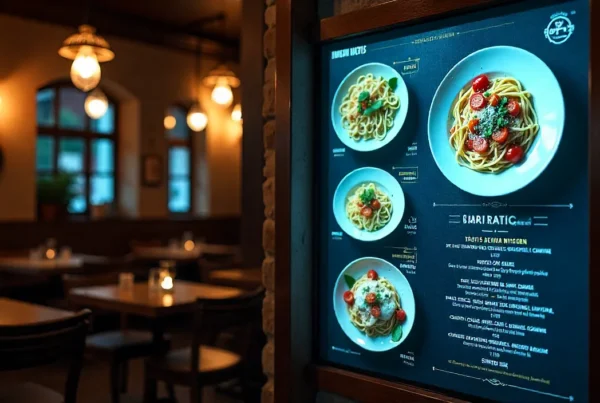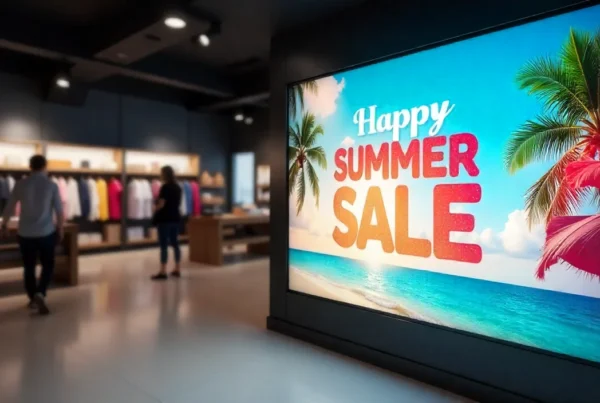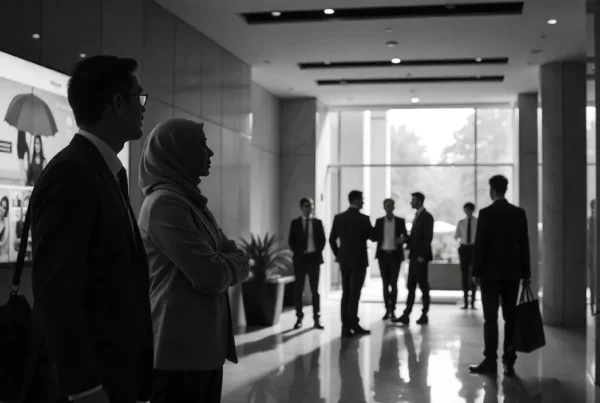Supercharge Your Displays with Instant Updates
A reliable system digital signage solution is no luxury in the age where customer expectations change with every minute. If you run retail digital signage networks, restaurant digital menu boards, or corporate lobby video walls, being able to send new promotions, last-minute notifications, or menu updates in real-time can create excitement and safeguard incomes. The key to every successful deployment is a robust system digital signage content management system (CMS) that integrates hardware and software into a seamless entity. We will discuss in this guide how the proper smart digital signage system can enable your team to change content in seconds, ensure brand integrity, and be nimble enough to respond to real-world events.
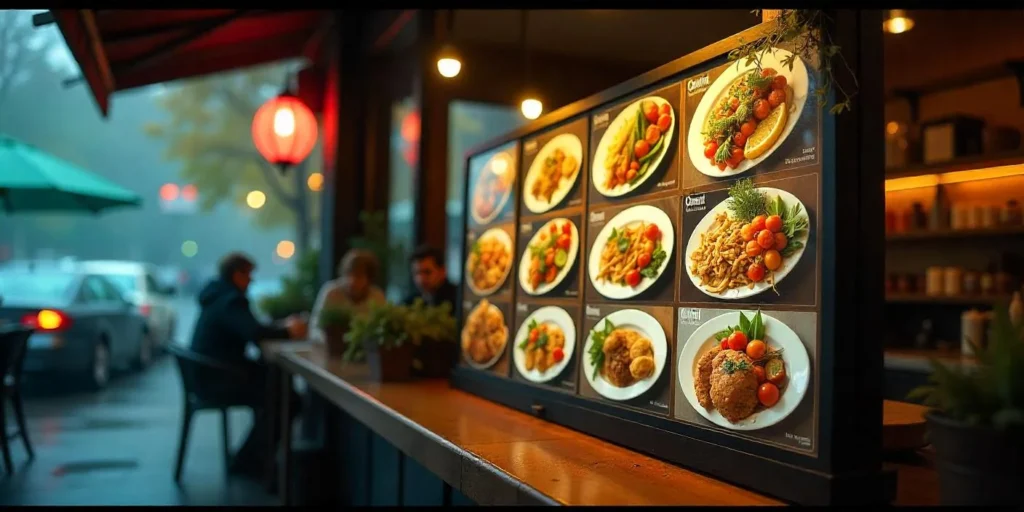
Why Fast Content Updates Matter
The currency of contemporary communications is speed. Think of a food truck digital menu board showing the specials of yesterday or a drive-thru menu board advertising a deal that ended several hours ago- every slip-up like this will cost you trust and sales. Quick changes through cloud-based system digital signage networks keep your content current: flash sales appear during peak hours, price fixes are displayed before a customer can notice, and emergency messages take precedence over regular content in real-time. When you reduce the decision-to-display time by hours to minutes, you use the full power of your finest system digital signage to seize every chance and keep viewers updated.
Understanding the System Digital Signage Workflow
The common workflow of a system digital signage starts with asset creation: images, videos, or HTML5 widgets created to fit exact canvas dimensions. Those assets will load into the digital signage content management system, where they will be placed into folders and can be tagged by campaign or by location. Then administrators add media to playlists, establish scheduling rules, and combine displays, such as a cafeteria menu board, a video wall system digital signage network, or standalone lobby screens. Lastly, the CMS sends updates across the network to individual media players. The effectiveness of such workflow is defined by the architecture of the system: cloud-native platforms require less maintenance of the servers, whereas hybrid models that include on-premise caching can provide continuous playback even in case of internet failure.
Choosing the Right Digital Signage System
8=he best digital signage system in your organization is a compromise between feature-rich and easy-to-use. Seek a platform that provides:
Cloud and On-Premise Choices
A hybrid solution allows you to manage the content in the cloud and still have a local fallback in case of connectivity failures.
Scalable Architecture
Whether it is a single display of system digital signage in a restaurant or hundreds of displays in international retail stores, the system ought to be expandable as your requirements increase.
User-Centric CMS
A user-friendly content management system that uses drag-and-drop layouts to lessen training time and mistakes.
Integration Ecosystem
POS, CRM, social media, weather data, and video conferencing platforms can be connected to your signage seamlessly and make it an interactive data-driven communication center.
By choosing a system that values both strength and simplicity, you can be sure that the content will be updated quickly, and you will not overwhelm your employees or IT infrastructure.
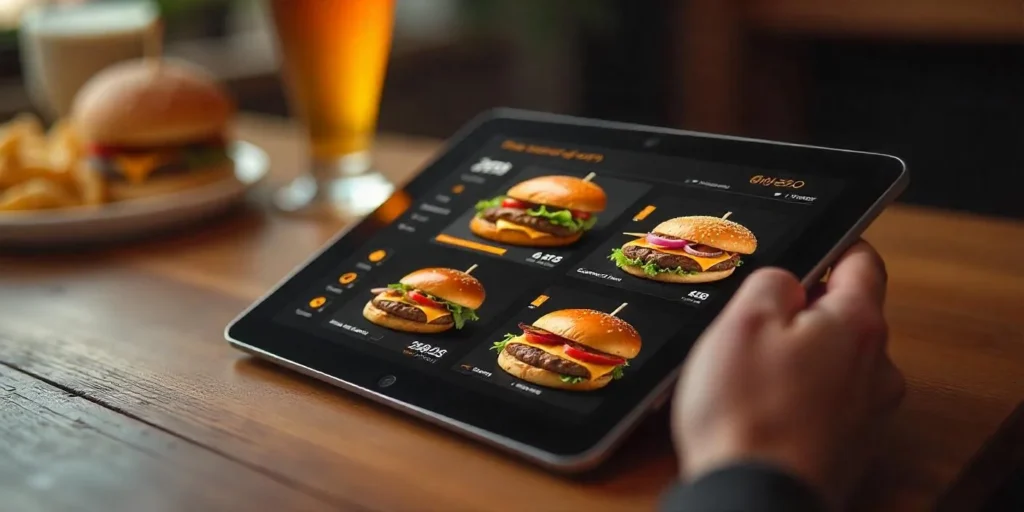
Features That Speed Up Content Updates
A clever digital signage solution will speed up workflow through a number of important functions:
Reusable Templates
Menu templates, promotion templates, wayfinding screen templates, and others can be pre-designed so that you can change the images or text in the template without having to re-create the layout.
Playlist Cloning
Make copies of whole playlists, including scheduling criteria, and modify only the media files, shaving minutes off of every new campaign.
Bulk Media Upload
Upload tens of files at a time and tag them in bulk to assign them to several displays at once.
Real-Time Preview
View the precise output of content on a distant video wall digital signage installation prior to it going live to avoid on-screen disasters.
Auto Scheduling
Plan out future content releases – holiday wishes or time-based offers – and set it to go; the rest is taken care of by the system.
When all these features are integrated, then the process of updating digital displays can be done in a couple of clicks as opposed to it being a bulky process.
How to Organize Content in Your Digital Signage CMS
Every swift update is supported with effective organization in your digital signage content management system. Begin with a reasonable folder structure, like Campaigns, Seasonal, Daily Specials, and Emergency Alerts, and users will always be aware of where to locate assets. Make the content tagged with descriptive metadata: “AprilPromo_Retail,” “LunchMenu_Cafe,” or “FireExitRoute.” Introduce user roles: Editor, Approver, and Publisher to facilitate the review process and prevent unintentional overwriting. Lastly, make each display or screen group descriptive (“Lobby_VideoWall,” “DriveThru_SideA”) so you can always be sure you are sending the correct content to the correct place.
Step-by-Step: Updating Content Using a Smart System Digital Signage
1. Log In
Open your CMS through a desktop or mobile application–no VPN is needed when cloud-based.
2. Select Display Group
Click on screens based on name, area, or purpose (e.g., all cafeteria menu boards in restaurants).
3. Upload New Assets
Drag and drop images, MP4 videos, or HTML widgets into the appropriate campaign folder.
4. Save to Playlist
Add these assets to playlists, old or new, with all the timing rules and transitions.
5. Schedule or Publish
Choose between instant publishing or select a specific date/time, i.e., Post #LunchPromo at 11:00 AM.
6. Live Preview
The real-time preview in the CMS allows checking the position on the system digital signage video wall or single screen.
7. Monitor Status
Scan the status of the devices and refresh the logs to make sure that all displays have the new content.
Best of all, even last-minute updates, such as a surprise discount code, are displayed across your network within minutes of this process.
 Best Practices for Streamlining Content Changes
Best Practices for Streamlining Content Changes
Maintain a Rolling Content Calendar
Map out weekly or monthly themes and hold time-sensitive promo and evergreen brand message spots.
Standardized Templates
Reduce the number of base layouts to promote uniformity as well as accelerate content replacement.
Train Multiple Editors
Allow marketing, operations, and store managers to make updates so that the site does not rely on one admin.
Automate Data Feeds
Automate the refresh of elements of your digital signage networks by integrating weather, stock quotes, or social media walls.
Regularly Purge Outdated Assets
Store or remove outdated media to keep your CMS clean and avoid confusion.
Common Challenges and How to Overcome Them
| Challenge | Solution |
| Slow Network Speeds | Implement on-device caching; optimize media file sizes |
| Asset Naming Conflicts | Enforce strict naming conventions and use version controls |
| Permission Bottlenecks | Define clear user roles; delegate publishing rights appropriately |
| Device Offline or Outdated | Monitor heartbeats; schedule automatic firmware updates |
| Overabundance of Manual Tasks | Leverage automation—API triggers, RSS feeds, and scheduled loops |
Ready to Transform Your Displays?
Using a system digital signage platform featuring an easy-to-use digital signage content management system, you can turn any screen, whether it is a digital menu board at a restaurant, a video wall in a corporate lobby, or a network of interactive kiosks, into a vibrant communication medium that can keep audiences informed, entertained and happy.
FAQ
What is a digital signage content management system?
The software foundation of any system digital signage solution is a CMS, which allows centralized uploading, organizing, scheduling, and remote publishing of multimedia content to networked screens.
How fast can I refresh content?
A cloud-native smart digital signage system can take content minutes to refresh across all the targeted screens – sometimes less than five minutes between click and live.
Can I update multiple displays at once?
Yes – with a major system digital signage, you can logically group screens (by location, by function, by campaign) and bulk-publish updates to them all at once.
What media formats are supported?
Standard formats are JPEG/PNG images, MP4/H.264 video, MP3 audio, and HTML5 interactive widgets or data feeds.
Do I need technical expertise to update the content?
No. The greatest system digital signage has a visual scheduler, drag-and-drop interfaces, and obvious device grouping-they are designed to be used by non-technical people.
Can I schedule content in advance?
Absolutely. Integrated scheduling allows you to create date and time-specific playlists perfect for running promotions, holiday messages, or emergency messages.
How do I integrate external data like weather or social media?
Most digital signage CIY provides API connectors, RSS widgets, or native integrations with services such as Twitter, Instagram, and weather data- Updating content in real-time is automated.
What makes a top digital signage system?
The best digital signage system will have a combination of fast real-time updates, easy-to-use CMS, powerful analytics, enterprise-level security, and integrations all rolled into one package.

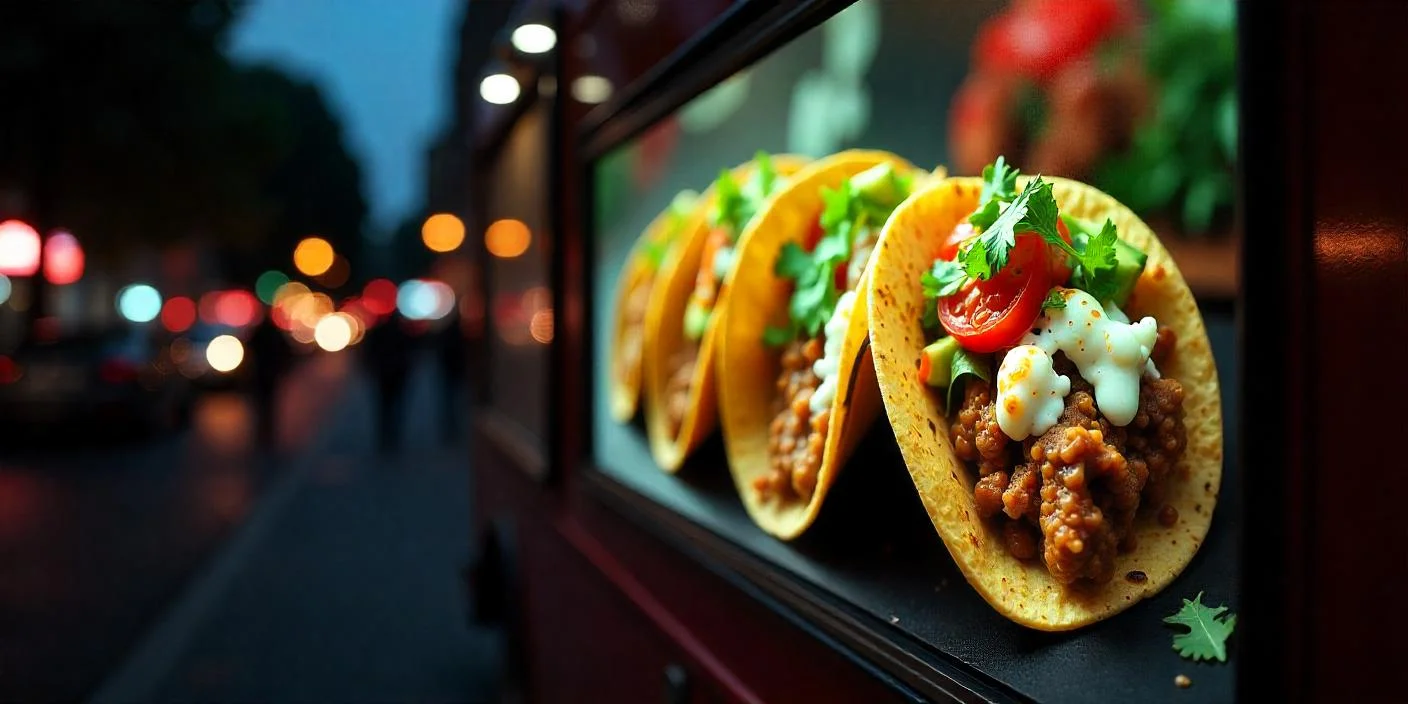
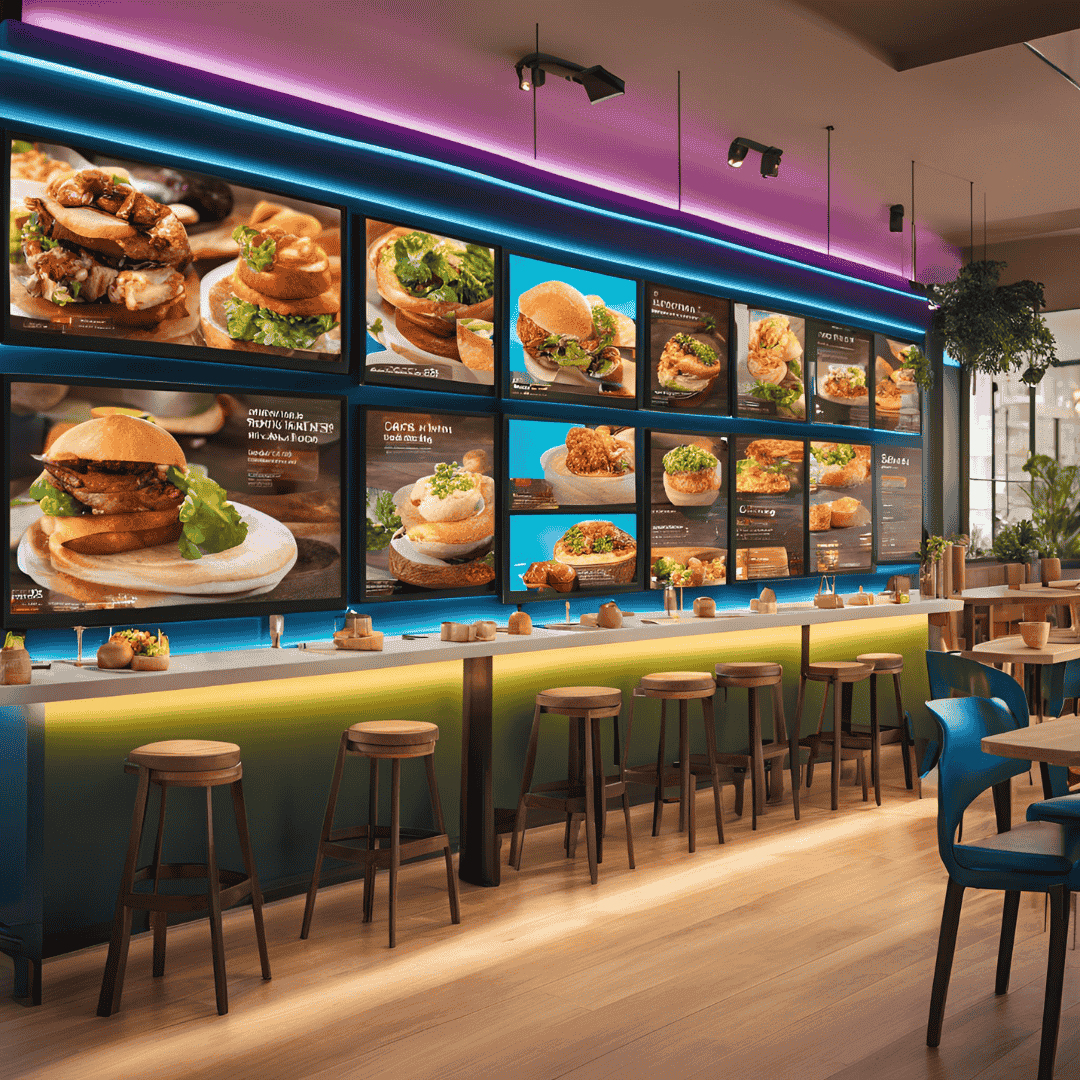 Best Practices for Streamlining Content Changes
Best Practices for Streamlining Content Changes